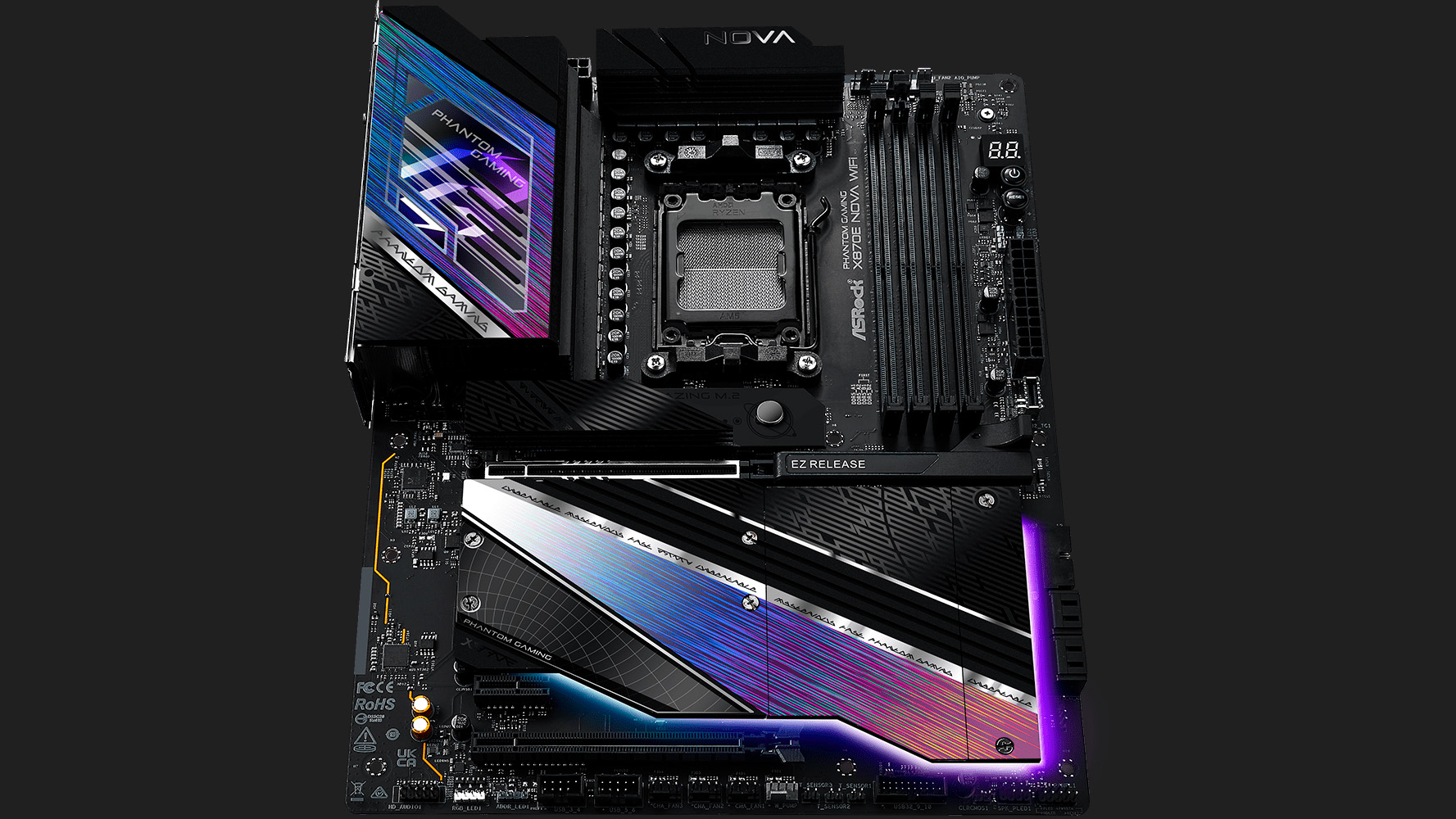ASRock releases new firmware for AMD 800-series motherboards to 'enhance CPU operating stability' — update may address the AM5 burning socket crisis
3.40 firmware reportedly brings lots of behind-the-scenes changes to voltages

ASRock has released a new firmware update, version 3.40, for its AMD 800-series motherboards. One of the changelog entries mentions improving processor operating stability, which might be connected to the recent AM5 burning socket issues. Uniko's Hardware first pointed out the new update.
The changelog for firmware is always concise - sometimes too brief to be of any use to the user. The one for the 3.40 firmware references "improve memory compatibility and system stability" and "enhance CPU operating stability." It's unclear whether this firmware addresses the problem with Ryzen processors burning up, but given the time of release, it's certainly possible.
AMD recently stated in an interview that the whole problem with the AM5 burning socket arose because some ODM firmware was not adhering to AMD's recommended values.
It's important to note that the issue at hand has been detected with other brands as well; however, since the majority of cases have involved ASRock motherboards, the company has been in the spotlight since the first case was reported.
Comment from r/ASRock
Without a detailed changelog, we're unable to investigate what exactly has changed in the 3.40 firmware. Nonetheless, users on the ASRock subreddit claim that the motherboard manufacturer has toned down the values related to the different voltages.
Apparently, the vendor has set a fixed SoC voltage (VDDCR_SOC) at 1.2V. If you're not into overclocking or tuning, the SoC voltage controls the amount of power supplied to the processor's I/O components, such as the memory controller, iGPU, PCIe lanes, etc. It's a voltage that's useful when memory overclocking or when you're enabling the AMD EXPO profile on your memory kit.
There's no official safe value for the SoC (System-on-a-Chip) voltage. AMD's AGESA code puts a hard limit of 1.3V, so obviously, the lower the voltage, the better. The consensus is to keep it at 1.2V or lower for everyday usage.
Get Tom's Hardware's best news and in-depth reviews, straight to your inbox.
Besides the SoC voltage, it appears that ASRock has set the LLC (Load-Line Calibration) level to 3 for the SoC voltage, rather than leaving it on automatic. The VDDCR_SOC LLC setting essentially adjusts the voltage supplied to the SoC by increasing it to offset voltage drops (V-droop) during periods of heavy load conditions. The level indicates how aggressive you want the VDDCR_SOC LLC to be. A value of 3 is more conservative and likely represents the middle setting, which is beneficial since auto can sometimes be detrimental by adding too much voltage.
The general rule of thumb for motherboard firmware updates is that if it's not broken, don't fix it. However, given recent events, this firmware might be one you should update if you're using an ASRock motherboard.
Follow Tom's Hardware on Google News, or add us as a preferred source, to get our up-to-date news, analysis, and reviews in your feeds. Make sure to click the Follow button!

Zhiye Liu is a news editor, memory reviewer, and SSD tester at Tom’s Hardware. Although he loves everything that’s hardware, he has a soft spot for CPUs, GPUs, and RAM.
-
SomeoneElse23 I'm guessing availability isn't widespread yet, as I'm not seeing 3.40 for the X870E Taichi Lite.Reply -
Makaveli Reply
They said the same thing about the 3.30 bios version.S58_is_the_goat said:Took them long enough..
I would wait a few weeks and monitor the asrock reddit thread before calling this a wrap. -
spoidz Just in time, I need to retry my ASROCK Phantom Nova 9950X3D build.Reply
Have to go into BIOS and testing to see actual changes vs from recommended from a source I'm following. -
TechieTwo As has always been the case - overclocking comes with risks and voids the CPU warranty. Jacking voltages without understanding the potential issues is risky. By now AMD has discovered the safe voltages for their CPUs and leaves less safety factor than in years gone by as does Intel so there is little to be gained from excess voltage overclocking. Some users actually enjoy better overclocking with lower voltages.Reply -
magbarn Reply
The problem is Asrock's default voltages were enough to cook the CPU. This is the motherboard maker's fault.TechieTwo said:As has always been the case - overclocking comes with risks and voids the CPU warranty. Jacking voltages without understanding the potential issues is risky. By now AMD has discovered the safe voltages for their CPUs and leaves less safety factor than in years gone by as does Intel so there is little to be gained from excess voltage overclocking. Some users actually enjoy better overclocking with lower voltages.